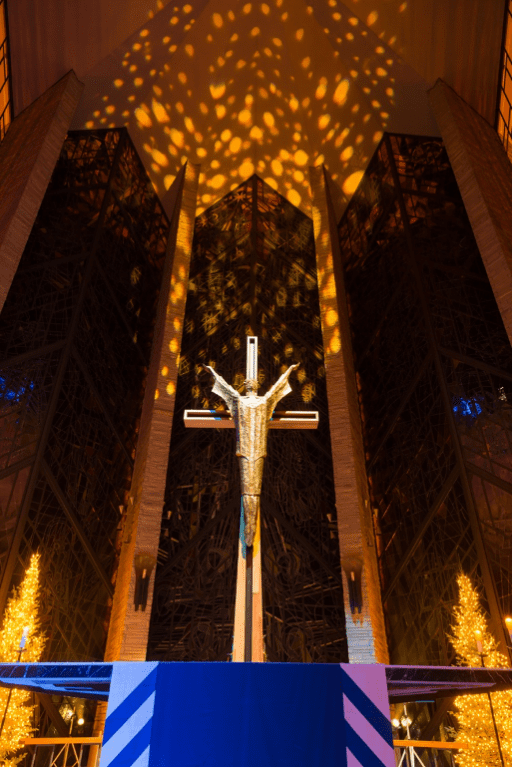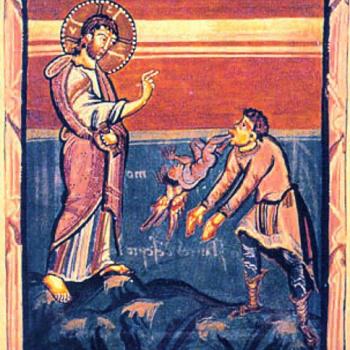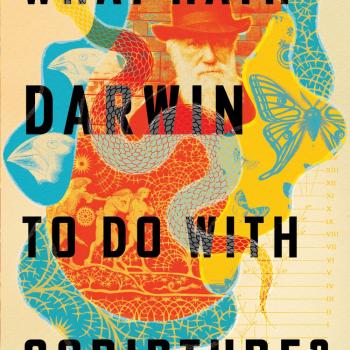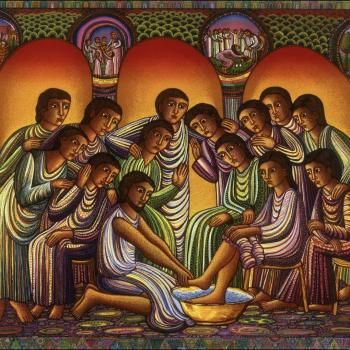Blog Series: In Their Own Words. Here authors of new books offer a snippet of their research converted to a blog form. Julien C.H. Smith is author of Paul and the Good Life: Transformation and Citizenship in the Commonwealth of God.
Salvation and the Good Life: Putting the Pieces Back Together
What does it look like to be saved? We might liken it to being rescued from life-threatening peril, as in pulling a drowning child from a river. But we could also envision salvation as restoration to a life of genuine flourishing, such as when an alcoholic is restored to a life of sobriety and health. These are distinct images of being saved, to be sure, although not mutually exclusive. To restore an addict to health, for example, may well entail rescue from circumstances which enable the addiction.
These generic understandings of salvation map well onto two specific ways of understanding salvation found within the church. On the one hand, we hear of salvation from the consequences of sin, namely death, through the atoning death of Christ. On the other hand, we speak of being saved to a life of discipleship, following in the way of Jesus.
We might well insist that a full-orbed picture of salvation requires us to hold together the notion of rescue from peril and restoration to wholeness. However, in my experience as a Christian—in a variety of different denominational settings and parachurch organizations—I have often found these two understandings of salvation divorced from each other.
That is to say, depending on where we worship on a Sunday morning, we may hold a picture of salvation in which rescue from sin has been divorced from restoration to a life of flourishing. Indeed, in some churches these may be seen as antithetical understandings of salvation. Perhaps we find it difficult to hold together these two dimensions of salvation because the image of Jesus himself is fragmented in our minds. As an example of what I’m talking about, consider the following images of Jesus.
 On the campus of Valparaiso University where I teach you will find two striking—and strikingly different—sculptures of Jesus. In the Chapel of the Resurrection, the glorious Christus Rex —Christ the King—soars upward from the ground, seemingly suspended in mid-air in front of the cross. Resplendent in glory, its gilded finish catching and reflecting the light, this majestic image captures the victorious hope of the resurrected Christ. Outside the chapel, on an unassuming park bench on the quad lies Homeless Jesus. His nail-scarred feet protrude from a meager blanket, scant protection against the winter cold. The unoccupied seat at the end of the bench invites passersby to share this space with Jesus, a fitting reminder of the way in which this Jesus has entered and shared our own space of suffering.
On the campus of Valparaiso University where I teach you will find two striking—and strikingly different—sculptures of Jesus. In the Chapel of the Resurrection, the glorious Christus Rex —Christ the King—soars upward from the ground, seemingly suspended in mid-air in front of the cross. Resplendent in glory, its gilded finish catching and reflecting the light, this majestic image captures the victorious hope of the resurrected Christ. Outside the chapel, on an unassuming park bench on the quad lies Homeless Jesus. His nail-scarred feet protrude from a meager blanket, scant protection against the winter cold. The unoccupied seat at the end of the bench invites passersby to share this space with Jesus, a fitting reminder of the way in which this Jesus has entered and shared our own space of suffering.

How can we hold in tension these two divergent portrayals of Jesus—the victorious king and the suffering servant? Like strong magnets of identical polarity, these two images of Jesus seem to resist our efforts to keep them together. Can we even imagine a figure possessing surpassing power and yet experiencing the fearful depths of human suffering? And out of this deficit in our imagination is borne both a fragmented picture of Jesus and a fragmented picture of salvation.
In my own efforts to hold these two images of Jesus together, I have experienced of late what philosopher James K. A. Smith (no relation) calls a “recalibration of the imagination” through studying Paul’s life and letters. My journey of discovery up to this point has resulted in my recent book, Paul and the Good Life: Transformation and Citizenship in the Commonwealth of God. The question at the heart of the book is how Paul works out the relationship between Jesus, suffering, victory, salvation, and the life of human flourishing. But for Paul this puzzle is no mere intellectual curiosity: our picture of Jesus has far-reaching practical implications for the way life is actually lived. The Apostle puts it this way: “I want to know Christ and the power of his resurrection and the sharing of his sufferings by becoming like him in his death” (Phil 3:10).
Knowing Christ’s power and sharing in his sufferings: Paul wrote those words from a prison cell facing the possibility of imminent execution. In that grim place, he not only discovered Jesus to be present in the midst of suffering; he came to imagine the life of flourishing in a profoundly new way—following in the way of Jesus the suffering king.
Why does it matter that we hold together in our minds an image of Jesus who is both victorious king and suffering servant? To answer this question we must ask another: What does Paul have in mind when he writes of being saved through faith in (and through the faithfulness of) Jesus?
Paul, I argue, understands salvation as both rescue from life-threatening peril and restoration to a life of wholeness. Through the death and resurrection of Jesus we are saved from the wages of sin, namely death, and we are restored to a life of genuine flourishing as we live under the present-and-coming reign of Jesus. These two dimensions of salvation are brought together in Paul’s understanding of Jesus as sōtēr, a Greek term normally translated as “savior” and often used as an epithet for a king in the Greco-Roman cultural milieu.
To be “saved” within this cultural context is not merely to be liberated from the rule of a tyrant, but to be made citizens of a new commonwealth, to be brought into a life of genuine flourishing under the reign of the savior-king. Paul has just such a holistic picture of salvation in mind when he writes that the Father “has rescued us from the power of darkness and transferred us into the kingdom of his beloved Son” (Col 1:13).
Having been rescued from the tyrannical power of sin, citizens of this new commonwealth must now endeavor to “live worthily as citizens (politeuesthe)” under the present-and-coming reign of Jesus (Phil 1:27), a life enabled by the Spirit as we are transformed into the image of the king. This is Paul’s Christocentric vision of the “good life”—we are saved from the deforming tyranny of sin and restored to a life of genuine flourishing.
Jesus, of course, is a king like no other. To follow such a king, it is crucial that we see Jesus whole—suffering and victorious. He is the king who did not exploit his own status and power, but emptied himself by entering into the human experience of suffering and death. But he is also the king who has been given the name that is above all names (Phil 2:5-11). Thus Paul desires both to know the power of Christ’s resurrection and to share in his suffering. It is only in putting these back together that we grasp Paul’s vision of salvation and the good life.
Check out Smith’s new book, Paul and the Good Life (Baylor University Press, 2020)













